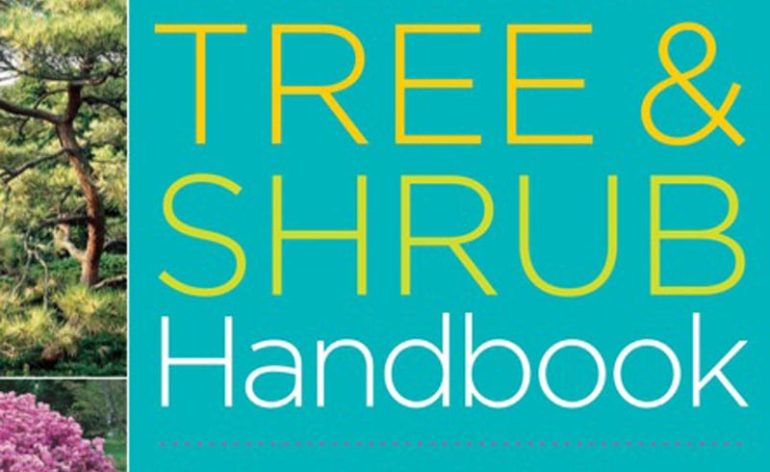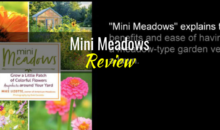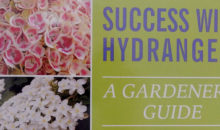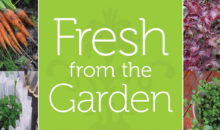The Homeowner’s Complete Tree & Shrub Handbook – Book Review
We independently evaluate all recommended products and services. If you click on links we provide, we may receive compensation.
The Homeowner’s Complete Tree & Shrub Handbook: The Essential Guide to Choosing, Planting and Maintaining Perfect Landscape Plants
By Penelope O’Sullivan, Photographs by Karen Bussolini
Storey Publishing, 2007
Paperback, 408 pages
$22.02 USD
The Homeowner’s Complete Tree & Shrub Handbook by Penelope O’Sullivan, with photographs by Karen Bussolini, is a comprehensive overview of woody plant options for gardeners in temperate zones of North America.
Three Sections: Design, Plant Selection & Care, Tree & Shrub Dictionary
The book is divided into three sections. The first is about the process of landscape design as well as the specific considerations that go into making informed tree and shrub choices for one’s own property; the second is about plant selection and care; and the third is a tree and shrub dictionary with each plant’s “vital statistics” and notes about its landscape use, strengths, and weaknesses, with notes on notable cultivars.
Section 1: Landscape Design Considerations
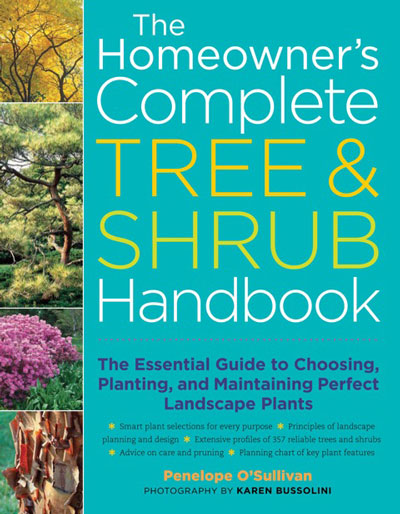 Although readers do not have to design a landscape from scratch in order to benefit from this book, O’Sullivan starts at the beginning, taking readers through the design process that professionals use. This includes a site survey (which can be informal), sketches, division of the property into “use areas” according to a standard set of criteria; identifying necessary access ways for everything from foot to automobile traffic, and more.
Although readers do not have to design a landscape from scratch in order to benefit from this book, O’Sullivan starts at the beginning, taking readers through the design process that professionals use. This includes a site survey (which can be informal), sketches, division of the property into “use areas” according to a standard set of criteria; identifying necessary access ways for everything from foot to automobile traffic, and more.
Under the heading “To Start You Thinking” O’Sullivan includes four pages of solid questions homeowners should ask themselves about their property and what they hope to get out of landscaping, including many important ones that most people probably wouldn’t think of on their first attempt at landscape design. She gets extra points from me for bringing up a number of unexciting but vital aspects of landscape design and maintenance that don’t get adequate treatment in most books, including structural elements such as storage sheds and compost bins; essential activities such as snow removal; and safety considerations,to name just a few.
O’Sullivan then devotes a chapter to criteria for choosing trees and shrubs. Here again, I found her treatment thorough and insightful. This chapter includes a number of useful lists identifying trees and shrubs that can tolerate common challenges (such as dry soils and salt exposure) or exhibit exceptional qualities (such as interesting bark, bright fall foliage color, flowers and fruit, etc.). Going above and beyond the usual, she includes a few out-of-the-ordinary lists, such as trees with striking silhouettes and good candidates for topiary. By cross-referencing these lists with the more detailed tree and shrub dictionary that comprises the third section of the book, homeowners can easily create a reasonably short list of contenders for their needs.
Section 2: Choosing, Planting & Maintaining Trees and Shrubs
The middle section discusses everything from purchasing to planting, pruning, fertilizing and otherwise maintaining your trees and shrubs. O’Sullivan’s advice is admirably detailed and practical, with one exception: the section on common woody plant diseases stands out from the rest of the book both for its brevity and for its use of color drawings rather than photos for illustration. I don’t consider this a downfall of O’Sullivan’s work, however, because the subject really requires its own book, so the only thing this section can be is a gloss.
The drawings here, while attractive, would not be much help with actual disease diagnosis, but they are an adequate starting point. The fact is that plant diseases can sometimes express themselves variably (meaning that one photo might not show all the ways the disease can look); most readers probably have some amount of online access to search for images of diseases they suspect might be present on their properties; and plant diseases ultimately should be diagnosed either by a professional arborist or a service such as cooperative extension, anyway.
Section 3: Tree and Shrub Dictionary
The final section of the book is the aforementioned tree and shrub dictionary. Plant dictionaries are both evergreen (no pun intended) and out of date as soon as they’re published because new cultivars are constantly being introduced while others go out of production and disappear from nurseries. At the same time, it’s fairly rare for an entirely new genus and species of tree or shrub to find its way into commerce. This book was published in 2007, so it’s inevitable that some cultivars readers will find in nurseries aren’t mentioned here. The dictionary is best used as a starting point for exploration that can be continued with more up-to-date materials. The more general observations O’Sullivan makes, which comprise the bulk of the text here, will apply equally well to both new and old cultivars.
Artful Design & Images
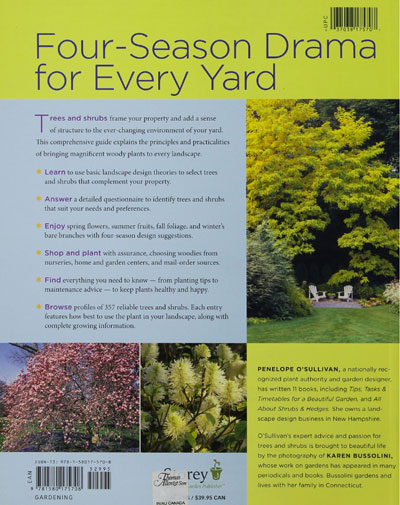 One of the things that struck me instantly about the book is its artful design, which makes it a pleasure to use. Karen Bussolini’s photographs give an excellent sense of the contribution each tree or shrub can make to the home landscape, usually showing the plant in question at its peak of ornamental interest, whether that be in flower, fruit, ablaze with autumn color, or viewed from an appropriate distance to convey its shape, stature, mass or texture.
One of the things that struck me instantly about the book is its artful design, which makes it a pleasure to use. Karen Bussolini’s photographs give an excellent sense of the contribution each tree or shrub can make to the home landscape, usually showing the plant in question at its peak of ornamental interest, whether that be in flower, fruit, ablaze with autumn color, or viewed from an appropriate distance to convey its shape, stature, mass or texture.
The book designers complemented Bussolini’s images with a tasteful palette of hues used to set off sidebars, headings, and other design elements. The book has a clean, contemporary yet classic look that enhances its usability, as the best design should. Rarely have I felt so inclined to simply open a reference book and read, just for the sheer enjoyment of handling it.
Recommendation
It is inevitable that in a book of even moderate size a reader will find some niggling points on which to disagree with the author. As a couple of examples, I don’t know why, in the plant dictionary, some species are hidden under the headings for others; and I have to question O’Sullivan’s inclusion of pine and mountain laurel on a list of deer resistant plants, but overall I find her advice throughout the book to be consistent with my own experience.
In fact, her advice is not just good—often it displays real wisdom. O’Sullivan suggests a wealth of ways for readers to educate themselves about what is likely to succeed in their area; she stresses regional appropriateness and the necessity of learning all the ins and outs of one’s property before making any major changes; she encourages readers to learn about plant communities and the animals that inhabit them and counsels them to use nature as a guide when selecting and combining appropriate plants. I heartily agree with all of this and more.
![]() Reading The Homeowner’s Complete Tree & Shrub Handbook, I was left with the distinct impression that O’Sullivan has worked with many different people on many different properties. I personally think you can’t ask for a better author than someone with that breadth of experience and the ability to articulate it; O’Sullivan has both and easily gets a “five shovel” rating for this excellent book.
Reading The Homeowner’s Complete Tree & Shrub Handbook, I was left with the distinct impression that O’Sullivan has worked with many different people on many different properties. I personally think you can’t ask for a better author than someone with that breadth of experience and the ability to articulate it; O’Sullivan has both and easily gets a “five shovel” rating for this excellent book.
Where To Buy
The Homeowner’s Complete Tree & Shrub Handbook is most easily found on Amazon where it’s available in paperback format for $22.02 or as a hardcover book for $39.95.
Last update on 2024-04-16 / Affiliate links / Images from Amazon Product Advertising API
Enjoyed This Review?
If you liked this review, please sign up for our email updates with reviews, how-to articles and gardening videos!

